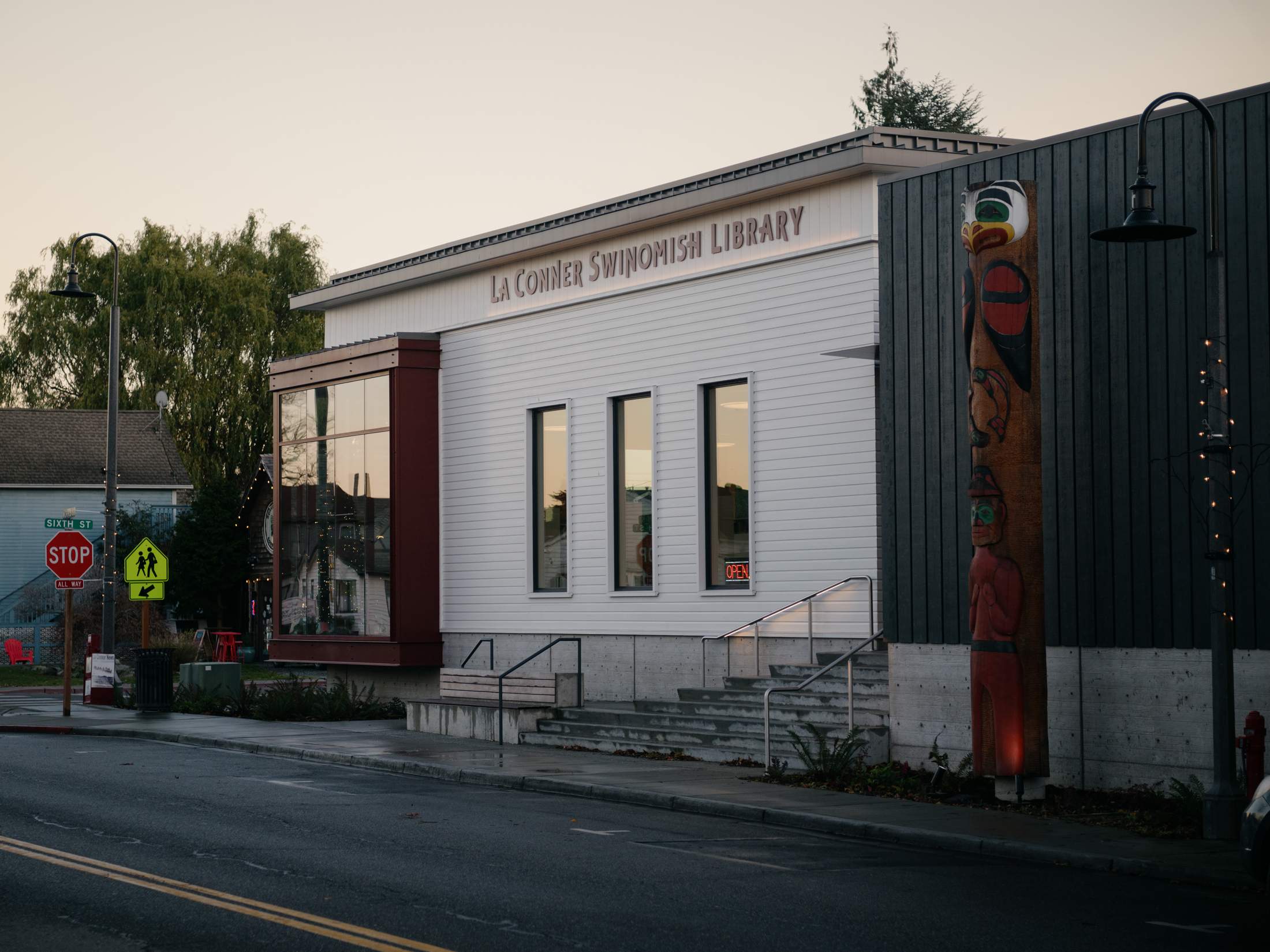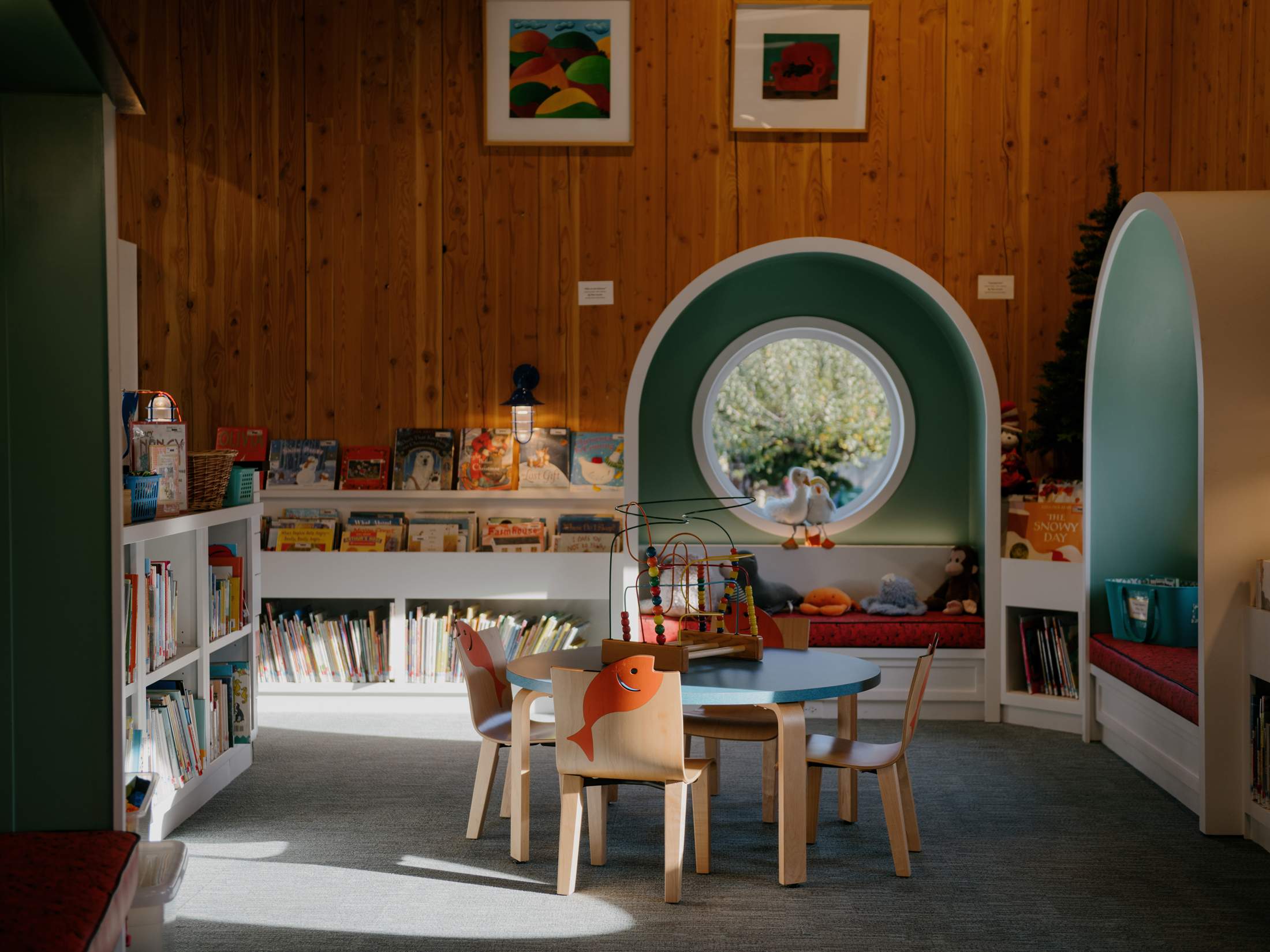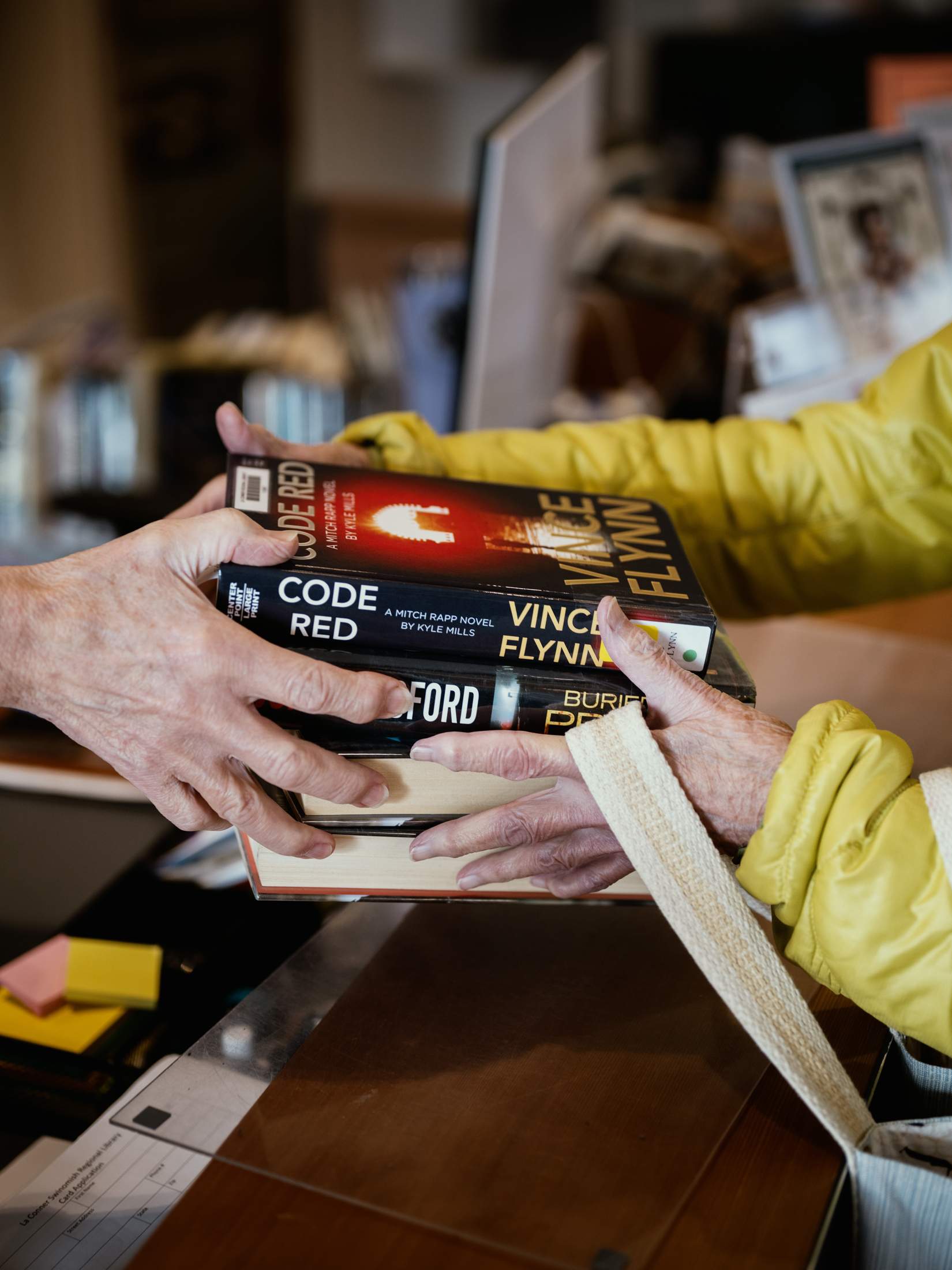Culture: Library / Washington
Turning the page
A bookish small town in Washington state banded together to build a new library as a resource that every member of its community can feel invested in.
The one-room schoolhouse has long been a marker of rural life. But what about the one-room library? Ten years ago, residents of La Conner, a town of about 1,000 souls 100km north of Seattle, were faced with the question of what to do with their shoebox-sized book repository. There was nowhere to sit and read or study. Children’s story time could only take place during off hours – there simply wasn’t room to accommodate families and browsing patrons at the same time. And the building, a former Hallmark shop, was in disrepair.

Townspeople charitably described the old library as “cosy”. But a community with a reputation as an artists’ haven, where galleries and independent shops line a waterside main street that’s home to two regional art museums, felt it could do better. In October 2022 the new La Conner Swinomish Library opened its doors. A year later, singing and drumming ushered in a dedication ceremony.
The name and ritual are significant: La Conner sits across a narrow channel from the Swinomish Reservation and the town itself is on land traditionally inhabited by the tribe. The two close-knit neighbours have amicable relations but there is some difficult history. As recently as the 1950s, Swinomish children were not allowed to eat in the school cafeteria or speak their native Lushootseed language.



There was no specific prohibition on Swinomish use of the old library but there wasn’t much affection either. “We didn’t really consider it to be very inviting,” says Swinomish tribal senator Brian Wilbur. But as costs to build the new space escalated, proponents came hat in hand to the tribe.
In 2019 the Swinomish contributed $850,000 (€775,000) at a critical moment in the effort to raise some $5m (€4.6m) to build the new library. The partnership meant that some changes to incorporate the tribe’s culture into the design, something that Seattle-based architecture firm Buildingwork, which spearheaded the project, ably accommodated. “Adding these traditional tribal elements make the library feel a lot more like home to our members,” says Wilbur. These days, more Swinomish children stop by after school and tribal elders visit on regular field trips.
La Conner residents are also coming in droves: young readers can lounge in a nautical- themed children’s area, while adult patrons peruse newspapers and magazines. The library has showed wise restraint with digital technology – there are just two public computers, plus another for accessing the catalogue. A certain civic bookishness has always been part of the town’s cultural dna. Citizens banded together to open the first library nearly 100 years ago, scraping along with donated books and volunteer labour until the 1990s. In 1993, residents of La Conner and its surrounding hamlets voted to tax themselves to pay for permanent library services.

This history meant that La Conner’s ability to rally around the new building didn’t surprise Susan Macek, previous director of the library foundation and current chair of the board of trustees. “A library has thrived here since the 1920s,” she says.
Moreover, at a time when small libraries are on the defensive in the face of pressures over allegedly offensive material, La Conner’s communal reading nook isn’t shying away from an assertive, informed response to the culture wars. Library director Jean Markert and the board are currently reading their way through the list of the most-banned books in the US and aren’t afraid to display All Boys Aren’t Blue, the second-most-banned book in the country, on the young-adult shelf. “There should be something in the library that offends everyone,” says Markert. “You don’t have to read it or check it out.”
On the day when monocle visits, the most satisfied patron is Julie Jones. A semi-retired gallerist, she is puzzling over how to build a wood and stone fence for the front yard of her home and has come to the library for inspiration, which she never would have done in the old space due to its lack of seating. To her delight, she finds a 1987 black-and-white guide to fence building, vindicating her decision to seek out the library. At home, she says, she has “tired of watching Youtube videos”.
Monocle comment: Thanks to the work of its residents, this small town punches far above its weight with a clever new library. Don’t be afraid to dream up a similar initiative in your own community.


